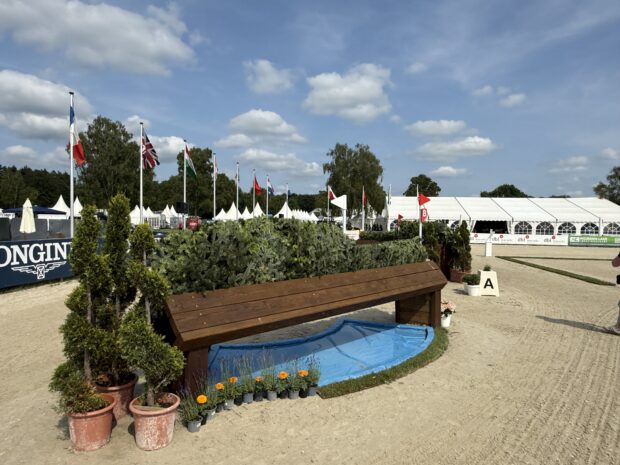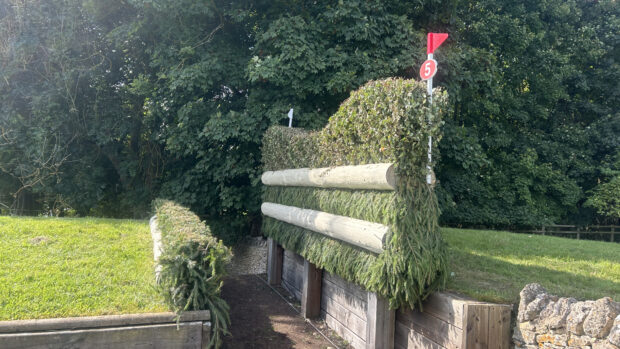Caroline Moore, former five-star eventer and British Eventing national under-18 coach and junior team coach, explains how you can use this exercise to sharpen up both you and your horse before competition
This is an exercise I use regularly before a competition. It’s made using four oxers in a row set at 11 yards (or just over 10m).
It’s a useful tool to develop the rider’s reactions and to also get the horse jumping through his back and getting very clean and careful.
Aims of the exercise:
- Develop scope and athleticism in the jump
- Develop rider’s eye for holding a line
- To improve horse’s suppleness
- To develop the partnership between horse and rider
As a warm-up riders should pick the odd fence within the line and jump them on a slight angle. This is really good as it starts to develop a partnership between horse and rider so that the horse follows where the rider wants to go. It’s quite tricky because as a rider, you really have to hold a line with your eyesight and not allow your horse to deviate. You also have to react quickly and this exercise doesn’t allow you two or three strides on landing to collapse — you always have to look to the new direction.
By jumping every other fence, it encourages the horse to stay upright through the curving line.
As a rider you need to hold with your new inside leg each time to prevent the horse from drifting to the new direction. This will help your horse land onto the correct canter lead and in good balance.
Even with cross-country fences that you can jump out of a rhythm over, it is massively important that you still hold a line — be very disciplined and don’t allow your horse to drift.
With a set of flags, the exercise encourages a rider to hold an inside line, to stop the horse drifting away from the turn and makes their withers work hard in the jump.
Positional points to be aware of:
- Legs losing contact with the horse’s sides
- Symmetry
- Eyesight focused
There’s a lot of challenges for the rider in this exercise. On top of the points above, you need to remain consistent in your aids, try to also keep some rein contact all of the time so that you can maintain your steering aids in the air.
By adding a little fence on a turn at the end of the exercise, the rider is encouraged to follow their eye after the last oxer. It’s important to think about how your flatwork will improve your next line of jumping, never letting a horse be sloppy on the turn.
Points to be aware of:
- A square turn and ability to hold the line
- Rider sighting the next fence
- Maintaining rhythm throughout the turn
- Quick reactions
- Praise and reward for the horse
More expert training advice from Caroline:

Watch Lordships Graffalo cross-country schooling as a six-year-old under Ros Canter

Subscribe to Horse & Hound magazine today – and enjoy unlimited website access all year round
Would you like to read Horse & Hound’s independent journalism without any adverts? Join Horse & Hound Plus today and you can read all articles on HorseandHound.co.uk completely ad-free




